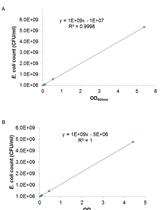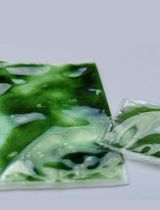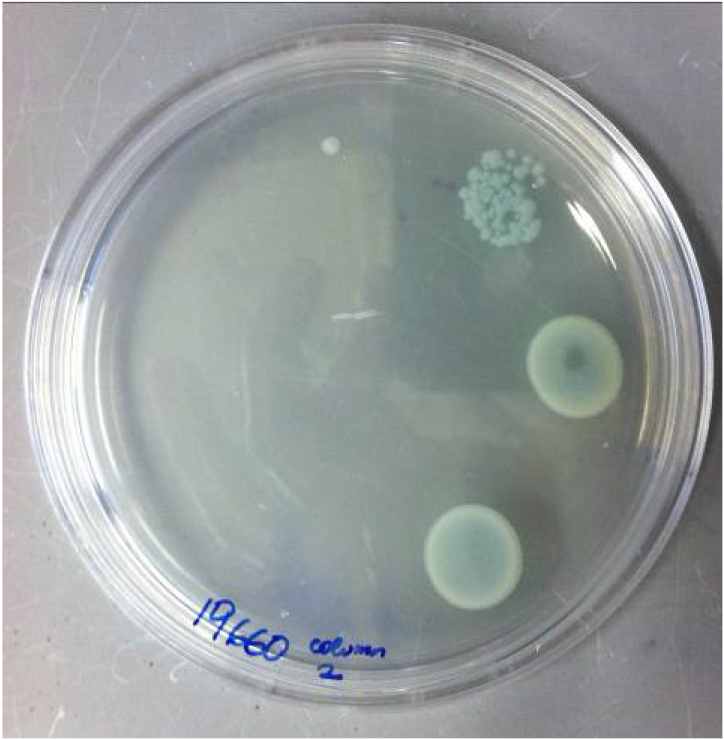- Submit a Protocol
- Receive Our Alerts
- Log in
- /
- Sign up
- My Bio Page
- Edit My Profile
- Change Password
- Log Out
- EN
- EN - English
- CN - 中文
- Protocols
- Articles and Issues
- For Authors
- About
- Become a Reviewer
- EN - English
- CN - 中文
- Home
- Protocols
- Articles and Issues
- For Authors
- About
- Become a Reviewer
Minimal Bactericidal Concentration for Biofilms (MBC-B)
Published: Vol 4, Iss 9, May 5, 2014 DOI: 10.21769/BioProtoc.1115 Views: 13370
Reviewed by: Fanglian HeAnonymous reviewer(s)

Protocol Collections
Comprehensive collections of detailed, peer-reviewed protocols focusing on specific topics
Related protocols

Determination of Survival of Wildtype and Mutant Escherichia coli in Soil
Yinka Somorin and Conor O'Byrne
Jul 20, 2017 8805 Views

An Improved Bioassay to Study Arabidopsis Induced Systemic Resistance (ISR) Against Bacterial Pathogens and Insect Pests
Nicolás M. Cecchini [...] Cara H. Haney
May 20, 2019 7992 Views

Shipment of Cyanobacteria by Agarose Gel Embedding (SCAGE)—A Novel Method for Simple and Robust Delivery of Cyanobacteria
Phillipp Fink [...] Karl Forchhammer
Dec 5, 2024 1368 Views
Abstract
A biofilm is a multicellular consortium of surface associated microbes surrounded by a hydrated, extracellular polymer matrix. The biofilm matrix plays a critical role in preventing desiccation, acquiring nutrients, and provides community protection from environmental assaults. Importantly, biofilms are significantly more resistant to antimicrobials relative to their free-swimming counterparts. The level of antimicrobial tolerance is influenced by a number of factors, including genetic/adaptive resistance mechanisms, stage of biofilm development, and pharmacokinetics of the antibiotic. Here, we describe an in vitro microtiter-based assay to quantify the minimal bactericidal concentration for biofilms (MBC-B) for short exposure times (2 h). This exposure period is significantly shorter than standard over-night and 24-hour treatments described in traditional protocols. This assay was developed to approximate the time an antibiotic is available during a one-time treatment before it is metabolized, sequestered by host proteins, or digested.
Materials and Reagents
- Glycerol stock of Pseudomonas aeruginosa (P. aeruginosa) (acquired from a single colony, stored at -80 °C)
- Bacto-tryptone (BD Biosciences, catalog number: 211705 )
- Bacto-yeast extract (BD Biosciences, catalog number: 212750 )
- Bacto-agar (BD Biosciences, catalog number: 214010 )
- Sodium chloride (Sigma-Aldrich, catalog number: S7653 )
- 10x PBS stock (Life Technologies, Gibco®, catalog number: 70011-044 )
- Colistin sodium sulfate (Sigma-Aldrich, catalog number: C4461 )
- Polymyxin sulfate salt (Sigma-Aldrich, catalog number: P4932 )
- Tobramycin (Sigma-Aldrich, catalog number: T4014 )
- Ciprofloxacin (Sigma-Aldrich, catalog number: 17850 )
- LB medium for agar plates (see Recipes)
- 1% TB liquid medium (see Recipes)
Equipment
- Glass beads (425-600 µm, sterile) (Sigma-Aldrich, catalog number: G8772 )
- Aluminum film (sterile) (Sigma-Aldrich, catalog number: Z722642 )
- 15 ml polystyrene culture tubes (sterile) (VWR International, catalog number: 89497-782 )
- Falcon 96 well polystyrene plates (flat-bottom, sterile with lid, non-treated) (Corning Incorporated, catalog number: 351172 )
- Spectrophotometer to measure absorbance of cell culture (OD600)
- 37 °C shaking and static incubators
- Titer plate shaker (Thermo Fisher Scientific, catalog number: 4625-Q )
- Multichannel pipette (volume ranges 10 μl-200 μl)
- Sterile plastic loops (1 μl) (Santa Cruz, catalog number: SC-200266 )
Procedure
- Day one: Prepare a 5 ml overnight culture of P. aeruginosa in 5 ml of 1% TB in a 15 ml polystyrene culture tube. Take a sterile plastic loop and scrape the surface of the frozen stock to acquire enough material to fill the loop.
Note: 1% TB is a low salt/semi-nutrient medium that can be substituted for more chemically defined media to test the effects of nutrient conditions on antibiotic susceptibility of P. aeruginosa biofilms. - Place the culture tube in the 37 °C incubator, shaking at 250 rpm overnight.
- Day two: Remove the culture from the incubator and prepare another 15 ml polystyrene culture tube with 5 ml of 1% TB. Inoculate the culture with 50 μl from the overnight culture.
- Incubate in the 37 °C incubator, shaking at 250 rpm for approximately 4 h, monitoring until an OD600 of 0.5 is reached.
- Dilute the culture to an OD600 of 0.0025 in 1% TB.
Note: This dilution is based on the C1V1=C2V2 calculation. - Add 150 μl of the diluted culture to each well of a sterile, non-treated polystyrene 96 well plate.
- Incubate plate for 24 h at ambient temperature to facilitate biofilm formation on the polystyrene.
Note: This part of the protocol is variable with respect to biofilm growth condition. For example, the timing of incubation can be shortened or extended to investigate different stages in biofilm development. The required growth temperature and agitation depends on the species under investigation. - Day three: Prepare two-fold serial dilutions of antibiotics for bactericidal testing in a separate 96 well plate. Starting concentrations for 4 antibiotics are as follows:
- Colistin: 1 mg/ml in PBS (pH 7.4)
- Polymyxin: 1 mg/ml in PBS (pH 7.4)
- Tobramycin: 10 mg/ml in PBS (pH 7.4)
- Ciprofloxacin: 1 mg/ml in PBS (pH 8.2)*
*Note: Ciprofloxicin harbors an ionized carboxyl group (negative charge) above pH 7.4.
- Colistin: 1 mg/ml in PBS (pH 7.4)
- After 24 h, the culture medium containing the planktonic and loosely adherent cells is removed by vacuum aspiration.
Note: We suggest vacuum aspiration for simplicity and efficiency while removing the culture medium, but pipetting with a multichannel pipette should not impair the assay if a vacuum aspiration system is unavailable. - Rinse and aspirate the wells with 150 μl of sterile PBS (pH 7.4) to remove any remaining unattached cells.
- Using a multichannel pipette, transfer 150 μl of the antibiotic dilutions to the 96 well plate with P. aeruginosa biofilms. Be sure to include PBS without the antibiotic as a control and three technical replicates for each antibiotic dilution.
- Incubate the plate statically at ambient temperature for 2 h.
- At 2 h, aspirate the antibiotics from each well.
- Rinse the wells with 150 μl of PBS (pH 7.4) and aspirate.
- Add 150 μl of PBS (pH 7.4) and 150 ml of glass beads to each well.
- Cover the plate with sterile Aluminum film. Care must be taken to make sure each individual well is sealed and separated from the other wells to prevent cross contamination of cells.
- Place on a tabletop plate vortex and set to medium high rotation (corresponds to speed 8 on a Thermo Scientific titer shaker). Shake the plate for 5 min to remove all of the attached cells from the polystyrene.
- To quantify cell viability, pipette 35 μl of cell suspension from each well on a dry LB agar plate.
- Leave the plates on the bench to allow the spots to dry. Then, place inverted in a 37 °C incubator overnight.
- The next morning, remove the plates and record cell growth for each concentration of antibiotic (Figure 1). The concentration that completely eliminates cell growth is referred to as the minimal bactericidal concentration.

Figure 1. Assay plate after antibiotic challenge. Cell suspensions from the antibiotic treated wells are spotted onto an agar plate and incubated overnight to allow any viable cells to grow. The lowest concentration that inhibits cell growth is recorded as the minimal bactericidal concentration.
Recipes
- LB medium for agar plates (1 L)
10 g of Bacto-tryptone
5 g of Bacto-yeast extract
10 g of Sodium chloride
12 g of Bacto-agar
Add dH2O to 1 L
Sterilize by autoclaving on liquid cycle - 1% TB liquid medium (1 L)
10 g of Bacto-tryptone
2.5 g Sodium chloride
Add dH2O to 1 L
Sterilize by autoclaving on liquid cycle
Acknowledgments
The development of this protocol was funded by NIH Grant R01 EB017755 and NIH-NIEHS Training Grant in Toxicology T32 ES7020-37.
References
- Billings, N., Millan, M., Caldara, M., Rusconi, R., Tarasova, Y., Stocker, R. and Ribbeck, K. (2013). The extracellular matrix component Psl provides fast-acting antibiotic defense in Pseudomonas aeruginosa biofilms. PLoS Pathog 9(8): e1003526.
Article Information
Copyright
© 2014 The Authors; exclusive licensee Bio-protocol LLC.
How to cite
Readers should cite both the Bio-protocol article and the original research article where this protocol was used:
- Billings, N. and Ribbeck, K. (2014). Minimal Bactericidal Concentration for Biofilms (MBC-B). Bio-protocol 4(9): e1115. DOI: 10.21769/BioProtoc.1115.
- Billings, N., Millan, M., Caldara, M., Rusconi, R., Tarasova, Y., Stocker, R. and Ribbeck, K. (2013). The extracellular matrix component Psl provides fast-acting antibiotic defense in Pseudomonas aeruginosa biofilms. PLoS Pathog 9(8): e1003526.
Category
Microbiology > Microbial biofilm > Killing assay
Biochemistry > Other compound > Antimicrobial
Microbiology > Microbial cell biology > Cell viability
Do you have any questions about this protocol?
Post your question to gather feedback from the community. We will also invite the authors of this article to respond.
Share
Bluesky
X
Copy link









